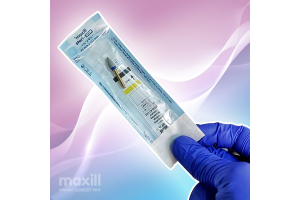How to Organize a Team Huddle

In sports, a huddle is an action of a team gathering, usually in a tight circle, to strategize, motivate or celebrate.
It’s a tactic that is commonly used in American and Canadian football.
The offensive team's huddle is almost always led by the quarterback, and the defensive huddle is typically led by one of the linebackers.
In the case of team huddle in a dental office, the dentist, office manager, or other personnel can be the quarterback or linebackers of the huddle.
The dental team huddle brings the office together to discuss the day's expectations, issues of concern, new products or procedures, infection control protocol, or other pertinent topics.
Organizing your dental team together for a team huddle can significantly affect the success of the entire practice.
How to Organize a Team Huddle
Just as the saying goes, too many cooks in the kitchen spoil the stew, the same is true when organizing a team huddle.
Each team huddle session should have a team huddle facilitator that keeps the team on track.
The dentist or office manager could hold the facilitator position.
Or each team member could offer to lead a huddle.
The facilitator will plan, set an agenda, and keep order for the team huddle session.
Each huddle session should incorporate an agenda that lists everything that the team huddle should go over.
Limit the number of topics for each session to keep the team on track.
Too many issues can create disorder leading to failure to achieve anything during the huddle.
Keep the huddle organized and at a determined time allotment.
Make It Quick!
Team huddles should not be time-consuming; daily huddles should be 10-15 minutes.
Weekly or monthly huddles could integrate more time.
The huddle should not be a full-fledged staff meeting or a social event.
Rather, an office team huddle should be a time to quickly address the practice's needs.
Appraise the timing of the huddle and consider the personal time constraints of the team.
End-of-the-day huddles may be difficult for parents who need to pick up children from daycare.
Morning huddles should allow time for everyone to finish the last of their coffee, discuss the agenda, and still not be rushed to get to the first patient of the day.
Not every office will need a daily huddle.
Once a week or even monthly may suffice.
Alternating huddle session times may be a possibility as well.
Each dental office will have to find a happy medium that works for most of their team.
Team huddles need to discuss problem issues; however, they should be an opportunity to address the achievements and successes of the office or team members.
Tips to Organize Your Office Team Huddle
- Assess office needs
- Assign a huddle facilitator
- Set time and place
- Set an agenda
- Involve the whole team
- Keep a positive attitude
Setting a Team Huddle Agenda
Communication is the most significant takeaway from the dental team office huddle.
Team huddles prevent inaccuracies in communication.
However, we have all been in those office meetings when we walk away, not communicating and not accomplishing anything.
Organize the huddle so effective communication occurs and it does not become just a gripe session.
To have an effective team huddle requires some preliminary assessment.
The huddle needs to represent the needs and atmosphere of the office.
Are you a small, close-knit office, or a larger corporate facility?
Think about what your office discussion needs are.
What is the focus, vision, or goals of your office?
The focus of your practice huddle may be productivity, marketing and practice building, scheduling, or troubleshooting frustrations that could occur with patients or among team members.
An opportunity to address the achievements and successes of the office or team members should also be include in a team huddle agenda.
Team huddles can be an important communication tool that allows the entire staff to have a voice and feel a part of the team.
It is a time to clarify job descriptions and responsibilities, office expectations and boost morale.
- There is no one size fits all.
- Customize the office huddle topics agenda to your specific needs.
- Involve all team members.
- Remember to keep team huddles short, concise, and on topic.
Keep in mind if huddles work for your office, great; if they do not, that is okay.
If your office functions efficiently and in harmony without team huddles, consider it fortunate and continue on!
The Huddle Homestretch
Inspired by sports huddles, dental team gatherings ensure focused discussions, aligning goals, and fostering teamwork. Efficiently led by a facilitator with clear agendas and respect for time, these brief meetings enhance communication, responsibility, and unity within the practice. Embracing adaptability, they stand as a valuable tool for cohesion and productivity, though not mandatory, offering felixibility for teams to find what works best for them.







